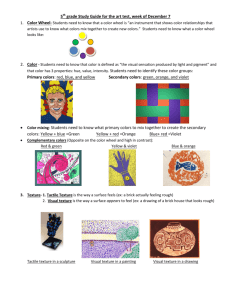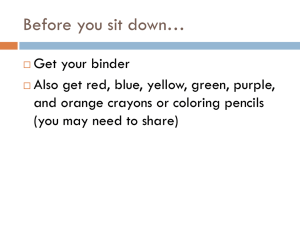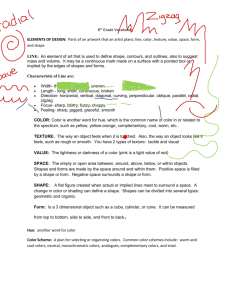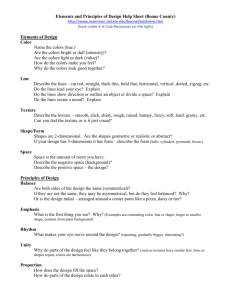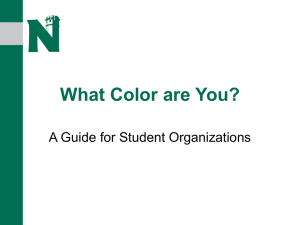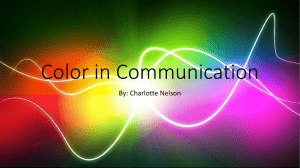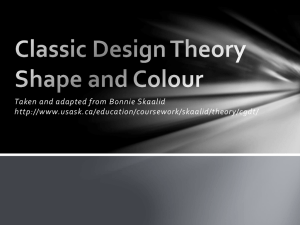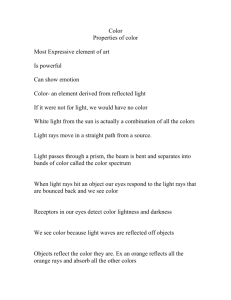Name - Fort Bend ISD
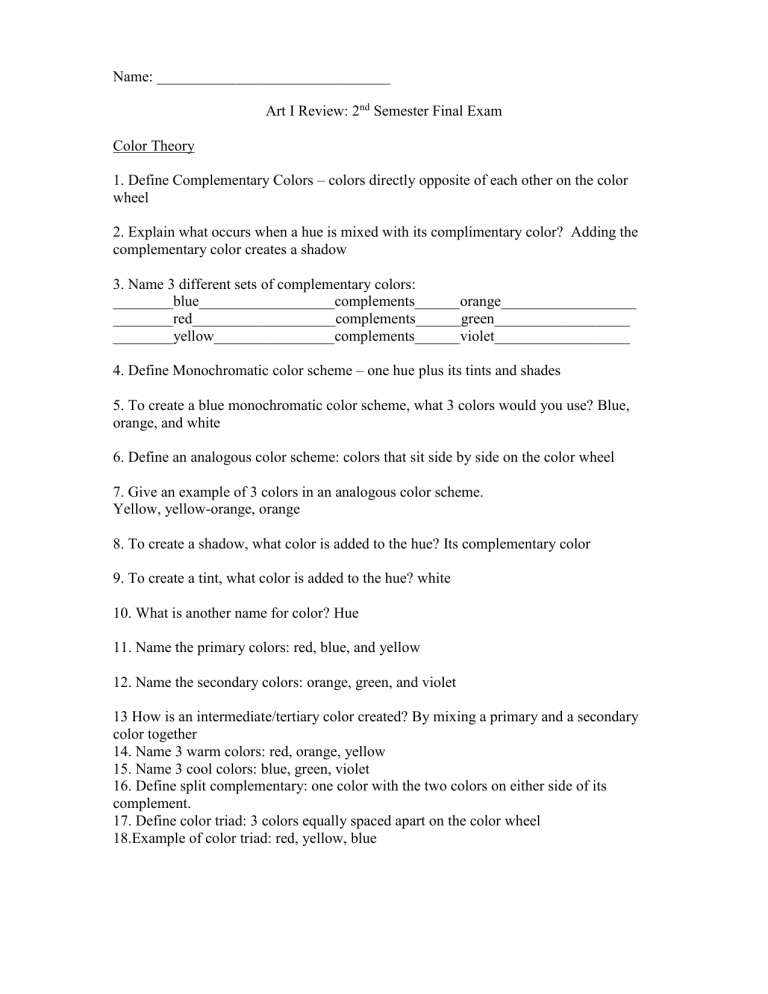
Name: _______________________________
Art I Review: 2 nd Semester Final Exam
Color Theory
1. Define Complementary Colors – colors directly opposite of each other on the color wheel
2. Explain what occurs when a hue is mixed with its complimentary color? Adding the complementary color creates a shadow
3. Name 3 different sets of complementary colors:
________blue__________________complements______orange__________________
________red___________________complements______green__________________
________yellow________________complements______violet__________________
4. Define Monochromatic color scheme – one hue plus its tints and shades
5. To create a blue monochromatic color scheme, what 3 colors would you use? Blue, orange, and white
6. Define an analogous color scheme: colors that sit side by side on the color wheel
7. Give an example of 3 colors in an analogous color scheme.
Yellow, yellow-orange, orange
8. To create a shadow, what color is added to the hue? Its complementary color
9. To create a tint, what color is added to the hue? white
10. What is another name for color? Hue
11. Name the primary colors: red, blue, and yellow
12. Name the secondary colors: orange, green, and violet
13 How is an intermediate/tertiary color created? By mixing a primary and a secondary color together
14. Name 3 warm colors: red, orange, yellow
15. Name 3 cool colors: blue, green, violet
16. Define split complementary: one color with the two colors on either side of its complement.
17. Define color triad: 3 colors equally spaced apart on the color wheel
18.Example of color triad: red, yellow, blue
19. Use the space provided to draw and label the color wheel.
Texture
20. Define texture: refers to how things feel or look as if they feel if touched
21.Define simulated Texture: imitates real texture
22. Define invented Texture: does not represent any real surface qualities
23. Define stippling: placement of dots close together
24. Define hatching: multiple lines in one direction
25. Define cross hatching: multiple lines in more than one direction
Fill the following areas in the specified technique:
26. Stippling 27. Hatching 28. Cross Hatching
Perspective
29. Use the space provided to draw a one point perspective box above the horizon line.
30. Use the space provided to draw a two point perspective box below the horizon line.
31. Use the space provided to draw a two point perspective stair case below the horizon line.
*Must have three stairs
32. In the space provided, draw 2 interlocking shape using 2-point perspective
33. The lines that recede back to the vanishing points are called orthogonal
34. How many points does two point perspective have? _2_________________________
35. The horizon line can be described as one’s point of _view______________________.
36. When a box is placed above the horizon line, do you see the top or bottom of the box?
_______bottom______________________________
Balance
37. Define symmetrical balance- both sides are exactly the same
38. Define asymmetrical balance – both sides are different
39. Define radial balance – comes from a central point
40. Using 4 shapes draw an example for symmetrical balance.
Variety
41. Name four different types of line variety: length, width, degree of curve, angle
42. Define variety: concerned with difference or contrast
Proportion
43. Define proportion: principle of art concerned with the size relationship of one part to another.
Artistic Style
44. Who is the artist best known for his work with the style of Impressionism? Monet
45. Who is the artist best known for his work with the style of Post-Impressionism?
Van Gogh
46. Post Impressionist use color to express emotion

